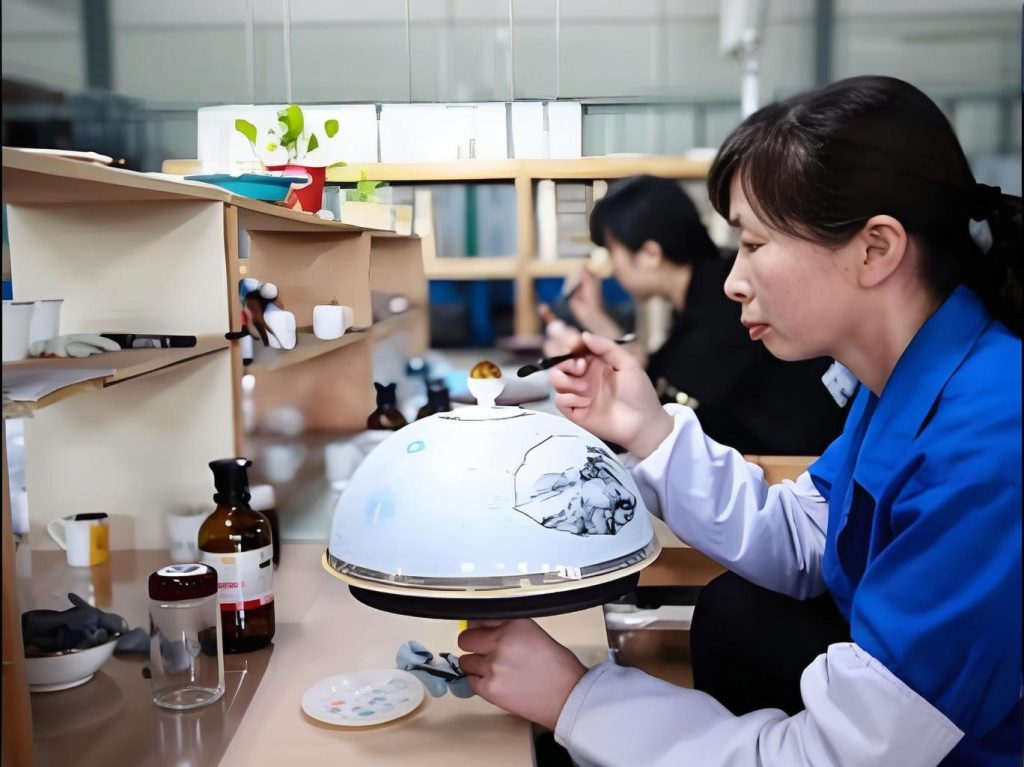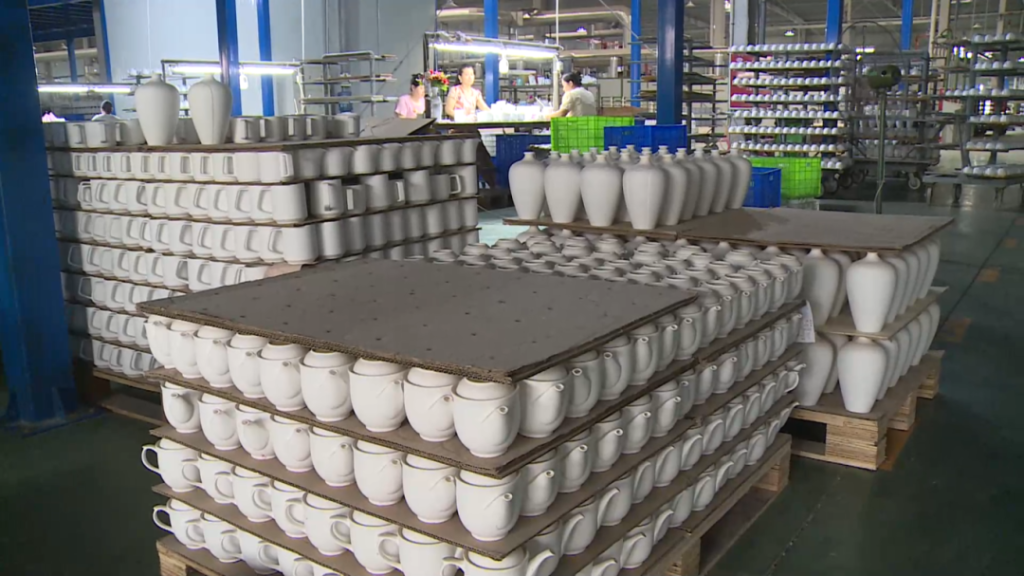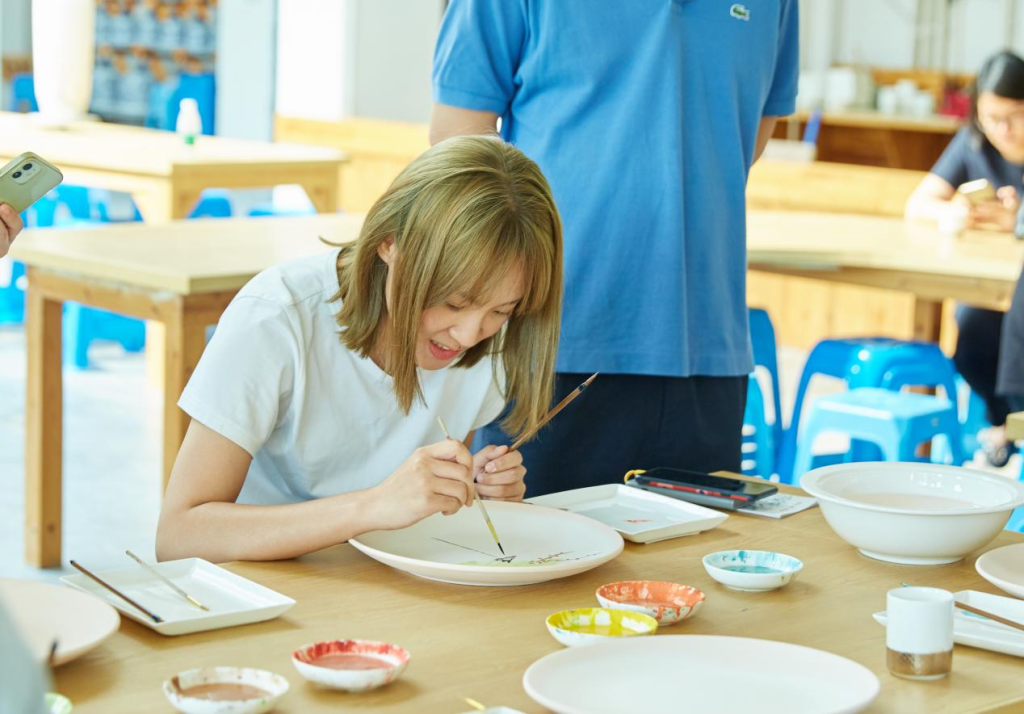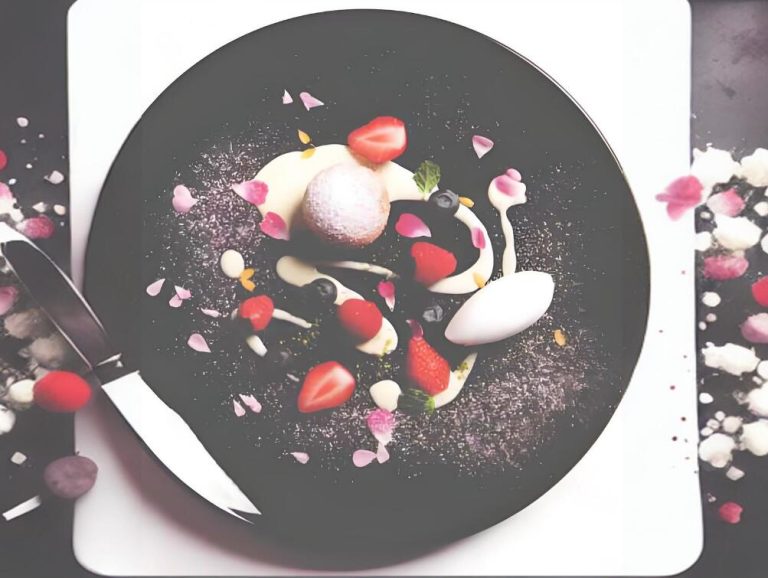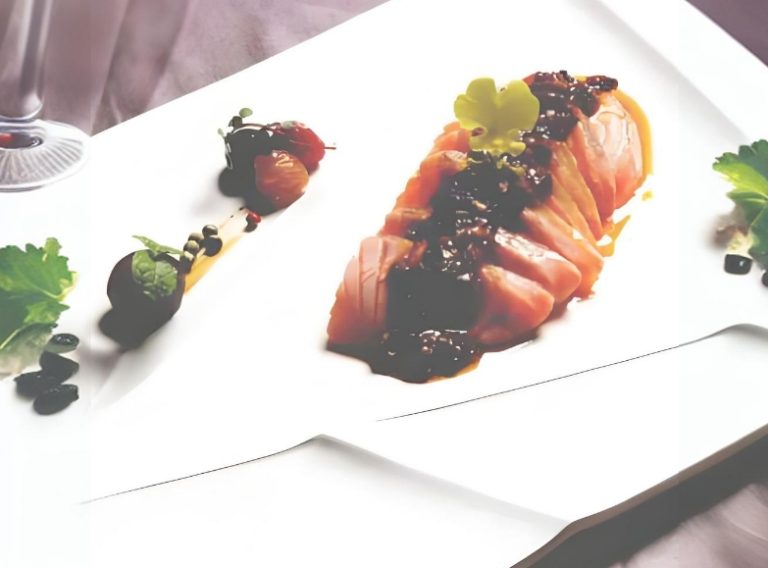Dip Glazing: The “Magic Moment” That Gives Dinnerware Its Soul
When a Piece of Dinnerware Meets the Glaze Vat
To be honest, before I delved deep into understanding dip glazing, I always assumed that the smooth glaze on dinnerware surfaces was sprayed on or brushed on. That changed during a visit to Jingdezhen, when I witnessed a master craftsman plunge a freshly formed bowl into a glaze vat with a “splash,” pulling it out three seconds later with a uniform coating of glaze slip shimmering under the lights—that moment made me suddenly understand what “the ritualistic sense of craftsmanship” truly means.
In Quora and Reddit’s dinnerware enthusiast communities, discussions about dip glazing are far more heated than I imagined. Someone posted on r/Pottery saying, “Seeing the dip glazing process for the first time felt like watching ceramics get a spa treatment”; professional experts on Quora explain in detail why high-end tableware manufacturers still insist on using this seemingly “primitive” technique.
In this article, I want to explore dip glazing—the crucial step that transforms dinnerware from raw clay into works of art.

What Is Dip Glazing? More Than Just “Taking a Dip”
Basic Principles: Three Seconds of Chemical Magic
The term “dip glazing” literally means “immersing to apply glaze,” but there’s considerable science behind this action.
Simply put, it involves completely immersing a ceramic piece that has undergone bisque firing into prepared glaze slip, utilizing the porosity of the bisque to allow the glaze to adhere uniformly to the surface, then quickly lifting and draining excess glaze. The entire process may take only 3-5 seconds, but the glaze thickness, uniformity, and even the final fired color are all determined in these few seconds.
A ceramicist on Reddit shared an interesting detail: “The position of your hands during dip glazing is crucial. If you hold the bowl bottom with two fingers while dipping, those two fingerprint spots will lack glaze and need touch-ups afterward. Experienced craftsmen can precisely control the contact area, making touch-up marks nearly invisible.”
This highlights the challenge of industrialization—robotic arms can achieve precision, but when facing dinnerware of different sizes and shapes, flexibility still can’t match human hands.
Why Not Just Spray or Brush the Glaze?
A highly upvoted answer on Quora explains this clearly:
Spray Glazing:
- Advantages: Suitable for mass production, glaze layer can be very thin
- Disadvantages: Prone to accumulation at corners, surfaces may be uneven, and wastes glaze material
Brush Glazing:
- Advantages: Suitable for localized decoration
- Disadvantages: Difficult to achieve uniformity over large areas, brush marks obvious
Unique Advantages of Dip Glazing:
✅ Uniform glaze thickness, especially suitable for dinnerware with complex curves
✅ High glaze utilization rate (glaze slip can be recycled)
✅ Can achieve certain special effects (such as different glaze colors inside and outside)
A Reddit user joked: “Dip glazing is like giving ceramics a ‘tailored coat,’ while spray glazing is more like ‘spray painting’—both work, but the texture is different.”

Real-World Applications of Dip Glazing in Dinnerware Manufacturing
High-End Tableware Manufacturers’ Commitment
I’ve noticed an interesting phenomenon: the more high-end the dinnerware brand positioning, the more likely they are to retain manual dip glazing processes.
In a Quora discussion thread about “luxury dinnerware production,” an engineer who worked at a European ceramic factory revealed: “Even tableware manufacturers with annual revenues in the hundreds of millions still arrange for skilled workers to manually dip glaze their flagship product lines. Because while mechanized dip glazing is efficient, it struggles to handle complex shapes with carved patterns and relief decorations.”
This reveals a contradiction:
- Market demand: Consumers want both exquisite, unique designs and reasonable prices
- Production reality: Complex designs mean more manual processes, naturally increasing costs
So many mid-range brands choose a compromise: mechanical dip glazing for plain dinnerware, manual processes retained for decorated pieces.
Dip Glazing “Failure Scenes”
A post on Reddit’s r/ArtisanVideos section is particularly authentic, documenting a ceramic novice’s dip glazing mishaps:
Problem 1: Glaze slip too thick
→ Result: Glaze layer too thick, cracking and peeling after firing
→ Cause: Poor glaze slip specific gravity control (professionals need hydrometers)
Problem 2: Soaking time too long
→ Result: Bisque absorbs too much water, glaze runs when lifted
→ Solution: Strictly control to within 3 seconds, move quickly
Problem 3: Uneven glaze slip mixing
→ Result: Surface color variations, some areas whitish, others grayish
→ Lesson: Must thoroughly stir before use to keep glaze particles uniformly suspended
A comment below joked: “Dip glazing is like making tempura—looks simple, but if temperature, timing, or technique goes wrong anywhere, you get ‘kitchen nightmares.’”
Indeed so.
Dip Glazing Details You Might Not Have Noticed
Different Colors Inside and Out? Double Dip Glazing Technique
When shopping for dinnerware at IKEA or Crate&Barrel, have you noticed some bowls designed with “matte black outside, glossy white inside”? Many such effects are achieved through dip glazing.
The process:
- First dip the bowl face-up into Glaze A
- After drying, invert and dip only the exterior into Glaze B
- Control the boundary line position for natural transition or clear demarcation between glazes
A ceramics teacher on Quora said: “This requires precise judgment of glaze drying speed. If you dip the second layer before the first dries, the glazes will mix; if it dries too thoroughly, obvious ‘overlap marks’ will appear.”
Why Are Some Dinnerware Bottoms Unglazed?
This question has been asked countless times on Reddit. The answer is quite practical:
Technical Reasons:
- If the bottom is also glazed, it will stick to kiln furniture during firing
- Solutions include scraping off bottom glaze before firing or using support pins (premium method)
Practical Considerations:
- Unglazed bottoms provide more friction, preventing dishes from sliding
- Many tableware manufacturers print brand logos on unglazed bottoms
However, there are exceptions—some Japanese handcrafted porcelain uses “full glazing + fine support pins,” grinding away pin marks after firing to pursue ultimate refinement. The cost, naturally…is also ultimately expensive.
The Future of Dip Glazing: Collision of Tradition and Technology
Can Robotic Arms Replace Human Hands?
This has been debated in the industrial ceramics field for over a decade.
Optimists (mainly automation equipment vendors):
- Six-axis robotic arms can now simulate human dip glazing motions
- Combined with vision recognition systems, can automatically adjust gripping positions
- Theoretically capable of 24-hour continuous operation
Pragmatists (mainly traditional manufacturers):
- Robotic “judgment” still insufficient: encountering minor bisque deformations or glaze viscosity fluctuations, programs may not adjust timely
- Equipment investment enormous, only economical for ultra-large-scale production
- Certain artistic designs still require human flexibility
A candid view from a German ceramic factory engineer on Reddit: “The future is probably hybrid—standard items by machine, limited editions by hand, taking best of both.”
Innovation Under Environmental Pressure
Those following sustainability in recent years will notice that some traditional glaze components (like lead-containing glazes) are being phased out. This brings new challenges to dip glazing:
- Lead-free glazes have different fluidity, requiring adjusted dipping parameters
- Eco-friendly glazes often have lower color saturation than traditional glazes, requiring formula innovation
A Quora thread discussing “why it’s hard to find old-style dinnerware with particularly vibrant colors nowadays” has a highly upvoted answer pointing out: many vivid glaze colors previously relied on heavy metal coloration, now impossible under current environmental standards.
But there’s good news—some tableware manufacturers are experimenting with nanomaterials and natural mineral glazes, expanding color boundaries while maintaining safety.
If You Want to Try DIY Dip Glazing…
Having read this far, some might be eager to try. Based on collective experience from Reddit pottery communities, here are practical suggestions:
Beginner-Friendly Setup:
- Buy commercial ready-made glaze slip (don’t formulate from scratch, 80% failure rate)
- Start practicing with small items (like teacups, small plates)
- Prepare a sufficiently deep bucket to completely submerge pieces
Pitfall Guide:
❌ Don’t dilute glaze slip with tap water (minerals affect results)
❌ Don’t touch the surface after dip glazing (fingerprints leave marks)
❌ Don’t dip glaze in humid weather (glaze dries slowly, prone to defects)
Expectation Management:
First attempts will likely not be perfect. As a pottery teacher on Quora aptly put it: “Dip glazing is like riding a bicycle—a hundred theoretical explanations don’t compare to taking a couple of falls yourself.”
Final Thoughts
From professional discussions on Quora to real experiences on Reddit, to observing tableware manufacturer production lines firsthand, I increasingly find dip glazing a fascinating craft—
It’s ancient enough, used by potters thousands of years ago;
Yet modern enough, still a standard process for high-quality dinnerware today.
It looks simple, just a “dipping” motion;
But to do it well requires almost instinctive mastery of materials, timing, and technique.
Next time you dine, try turning your plate over to look at the bottom, imagining those three seconds it spent in the glaze vat—that might be the moment when a piece of dinnerware comes closest to “artwork” status.
After all, it’s that thin layer of glaze that transforms cold clay into warm objects that accompany every meal.
If you have any questions or need to custom dinnerware service, please contact our Email:info@gcporcelain.com for the most thoughtful support!


